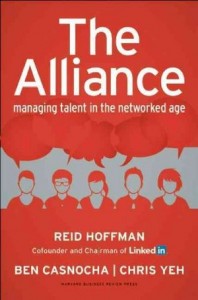Written by Paul Angone
The obstacles facing twentysomethings today are massive and can sometimes feel un-scaleable.
I thought in my twenties I'd be running full-speed and winning the race I'd been preparing for so many years to run.
Instead, I felt like I tripped at the starting line and looked up to see a race filled with potholes, rings of fire, and dream-eating-managers covering the path I thought was going to be smooth and straight.
What exactly are the main obstacles facing twentysomethings today? And more importantly, how do we leap over them?
Five Obstacles Facing Twentysomethings
1. Informationized
Twentysomethings are being informationized, a barrage of "need to knows" being shot at us with every step.
With twentysomethings being exposed to 1 trillion messages a day - give or take a billion, information is no longer gold, it's a trap. At least the wrong kind of information.
Just like the food we eat -- the information we consume can be junk or it can be nutritious. Consuming the right information is just as important as blocking all the wrong.
How we overcome:
We need to start asking questions about our info-intake.
Do you need to turn off the wireless internet at certain points during the day so you can focus on one task?
Do you need to stop watching the news about everything that's going wrong in the world and just focus on what you can do right?
Instead of reading so much of our information in today's headlines, how about we read books full of needed and important info specifically for us. If you're not sure where to start, check out my list of the Top 21 Books for Twentysomethings.
Wherever your info-intake is at right now, start asking yourself when enough info is enough. Death by information is a terrible way to die.
2. Social Media
Social media can either be like a black hole, sucking all your time, energy, and creativity into a vortex of zero returns.
Or social media can create a galaxy of opportunities, relationships, job opportunities, and platforms like never seen before.
Social media is the great amplifier, shouting the good and bad of YOU at record octaves. It takes your success, failures, fears, and puts them on stage for the world to judge. And how you're presenting yourself on the social media stage can make all the difference.
How we overcome:
Is social media something you do intentionally or without any thought?
Is your social media presence proactive or reactive?
Are you strategically creating your online brand or are you letting others create the brand for you?
Social media is like a chainsaw. How you wield it is the difference between building something or just cutting everything down.
3. Stereotypes
As I wrote in "Enough with the Twentysomething Stereotypes!", the same old buzzwords are being thrown around and adopted about everything twentysomethings "are doing wrong."
We don't dare stereotype based on gender, religion, race, or sexual orientation, but if you stereotype based on age you'll have a front cover story.
And if you're twentysomething, your managers might have their own stereotypes about you based on your age before you even tackle a project.
The stereotypes might be subtle or incredibly pronounced, but you must be aware of how you are being perceived. Then do your best to take those stereotypes to the shredder and into the outgoing trash.
How we overcome:
As I wrote in my book 101 Secrets for your Twenties,
If you feel like you’re being stereotyped because of your age, your best ally is quiet confidence—a humble consistency that shows up and gets the job done. You don’t argue with them about your skill set, you just show them every single day how awesome your skills are.
It’s a tough, thankless gig, but soon, very soon, you’ll prove to them that you’re a person, not an age range.
4. Lackluster Economy + Debt = Holy Horse-Apple
You don't need me to tell you that the economy has been a tad dumpsterish lately, with many twentysomethings taking out thousands of dollars in college loans for the grand opportunity to step up to the garbage bin to find that job in the rough. The Great Recession became a very depressing twentysomething reality.
How we overcome:
Instead of complaining about a lack of opportunity, we need to focus on creating them instead.
We can't sit around and wait for an open door, we have to keep pounding on them until one busts open.
We can't be reactive to the economy's woes, we have to be proactive in finding needs and meeting them.
Opportunities for twentysomethings didn't disappear, it just takes a little more hutzpah to uncover them.
5. Wasted Time
Now that I'm married with two daughters, I become a tad sick when I think about all the hours I wasted in my early twenties.
Time is your greatest asset. And for most twentysomethings time is still on your side.
Just remember that time is a depleting supply.
As you possibly look to get married, buy a house, have kids, the time you're going to have to pursue your dreams is going to be fleeting. For me, that meant working a full-time job, putting kids to bed, and then chasing my dream of becoming a full-time writer and speaker at 5:00 am or 10:00 pm, trying to ring productivity out of every free second.
How we overcome:
Wasting free time is very expensive.
Make a schedule. Choose your time. Don't let it choose you.
Wasting time becomes a never-ending carousel, anxiety multiplying with every turn.
Time is a gift. Unwrap it and use it wisely.
Your life might not be turning out nothing like you planned mainly because you never had a plan to begin with. Take time to make one.
I'd love to hear from you in the comments section below on this article:
What obstacles are you trying to overcome?
 About Paul
About Paul
Paul Angone is the author of 101 Secrets for your Twenties and the creator of AllGroanUp.com, a place for those asking "what now?" Snag free chapters from his book and follow him at @PaulAngone.
 Written by Jenny Blake
Written by Jenny Blake








 Jenny Blake is the author of
Jenny Blake is the author of 

 At first glance,
At first glance, 



 Written by
Written by 
